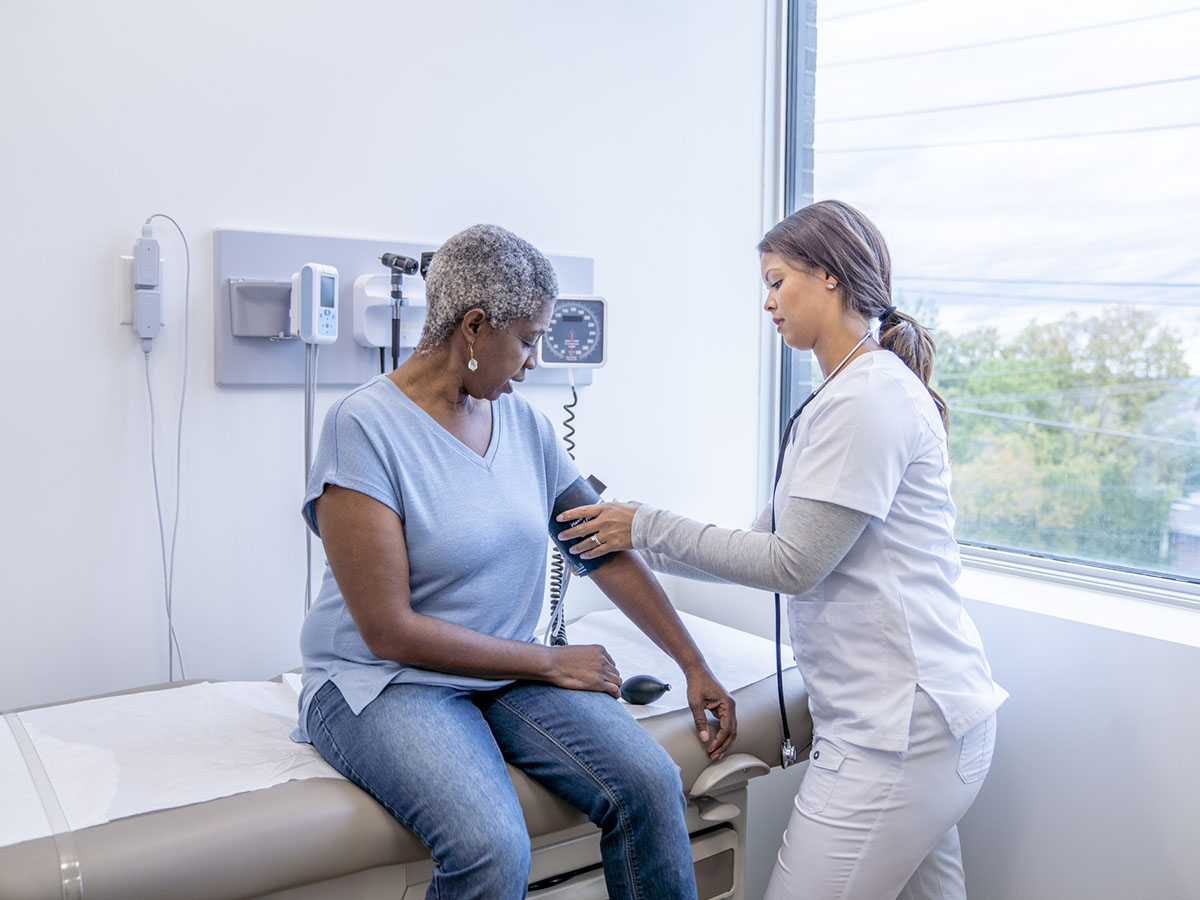Chest Pain Care
Persistent chest pain is a sign a heart attack could be on the way. Learn how Virtua heart specialists can help prevent it.

Angina is chest pain caused by reduced flow of blood to the heart. Virtua cardiologists use the latest diagnostic and treatment tools to open your arteries and restore proper blood flow.
Signs and Symptoms of Angina
Angina is a symptom of coronary artery disease (CAD), a narrowing of the arteries feeding your heart caused by the buildup of fatty material called plaque. If blood flow to the heart is cut off, you can have a heart attack.
Chest pain and discomfort are the most common symptoms of angina. This could feel like:
- Squeezing
- Pressure
- Heaviness (like a weight resting on your chest)
- Fullness
Other symptoms of angina may include:
- Pain in the arms, neck, jaw, shoulder, or back
- Dizziness
- Fatigue
- Shortness of breath
- Sweating
Angina can be hard to distinguish from other types of chest pain, such as heart burn.
If you have unexplained chest pain or a worsening of symptoms, call 911 or go to the nearest emergency room.
Types of Angina
Stable angina
The most common form of angina, it occurs during activity (such as walking uphill or in cold weather) and goes away with rest or medication. The chest pain is predictable and lasts a short period of time.
Unstable angina
Happening with less physical effort or at rest, this is a medical emergency. The pain is more severe, lasts longer than unstable angina, and does not go away with medication. Call 911 or get to the nearest emergency room.
Angina Diagnosis at Virtua
To diagnose angina, your doctor will perform a physical exam and ask questions about your symptoms.
Common tests to diagnose angina include:
- Electrocardiogram (ECG): A quick and painless test that measures the electrical activity of your heart.
- Stress test: A test that measures the effect of exercise on your heart. It is often performed while you walk on a treadmill. If you are unable to exercise, a pharmacologic stress test uses medication to simulate the effects of exercise on your heart.
- Nuclear stress test: Radioactive material injected into your bloodstream measures blood flow at rest and during exercise.
- Echocardiogram: A test that uses soundwaves to create images of your heart in motion.
- Computed tomography angiography (CTA): CTA uses X-rays, radioactive dye, and computer software to provide three-dimensional images of your blood vessels. A new technology called fractional flow reserve determines if a specific area of plaque in a coronary artery is restricting blood flow and may need an angioplasty or other intervention.
- Blood tests: A cardiac enzyme test can help detect damage to the heart.
Depending on the results of your tests, you may undergo a diagnostic cardiac catheterization. During this procedure, a thin tube is inserted into your blood vessel so doctors can get a closer look at a potential blockage. If needed, treatment to reopen the vessel may be done at this time.
Angina Treatment at Virtua
The goal of angina treatment is to reduce the severity and frequency of your symptoms and to reduce your risk of a heart attack.
Your doctor will work with you to create a treatment plan that’s best for you.
Treatment options include:
- Lifestyle changes, including exercise and eating a heart-healthy diet
- Medications, such as nitrates to relax and widen blood vessels, aspirin, clot-preventing drugs, and cholesterol-lowering medicines like statins
- Angioplasty and stenting, a procedure that uses a special inflated balloon to widen an artery and a small coil called a stent to keep it open
- Coronary artery bypass surgery, a procedure in which a blood vessel from another part of your body is used to go around the blocked or narrowed artery
Virtua Chest Pain Specialists
With offices located across South Jersey, our cardiologists are never a far drive from home.
The Virtua Difference for Chest Pain Care
Our team of more than 100 cardiac experts provides a whole-hearted approach to your health, offering comprehensive care from medical cardiology to interventional procedures to advanced cardiac surgery.
Our team of more than 100 cardiac experts provides a whole-hearted approach to your health, offering comprehensive care from medical cardiology to interventional procedures to advanced cardiac surgery.
Emergency cardiac care is provided at all five Virtua hospitals, with the most advanced interventions at nationally recognized Virtua Our Lady of Lourdes Hospital.
Emergency cardiac care is provided at all five Virtua hospitals, with the most advanced interventions at nationally recognized Virtua Our Lady of Lourdes Hospital.
Advanced imaging technology, such as computed tomography angiography with fractional flow reserve to better diagnose heart problems.
Advanced imaging technology, such as computed tomography angiography with fractional flow reserve to better diagnose heart problems.
